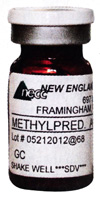Will the Goose Survive?
I attended a faculty and staff town-hall meeting with the senior officers of the University of Louisville that was held on the Belknap campus last September 20. I knew that I would be unable to attend a similar meeting at the Health Sciences Campus (HSC) October 12, but was hoping for an opportunity to take the pulse of the faculty on the matter of the question: “Is the University was going in the right direction.” I can’t say my question was answered, but I gained a few insights relevant to current controversies at the Medical School.
To summarize: Belknap employees expressed neither concern nor interest for what is happening on the HSC and Hospital. Financial concerns about salaries and ability to recruit faculty dominated. No magic bullets were offered. Specific remedies to current financial distress were thin on the ground. Is seems clear that the University is planning on increasing clinical revenue to support non-clinical academic activities. I invite faculty or staff who did attend the companion meeting at the HSC to tell the rest of us what happened, or to contact me confidentially. Continue reading “Meeting Confirms Plans to Increase Dependency of UofL on Clinical Income.”

